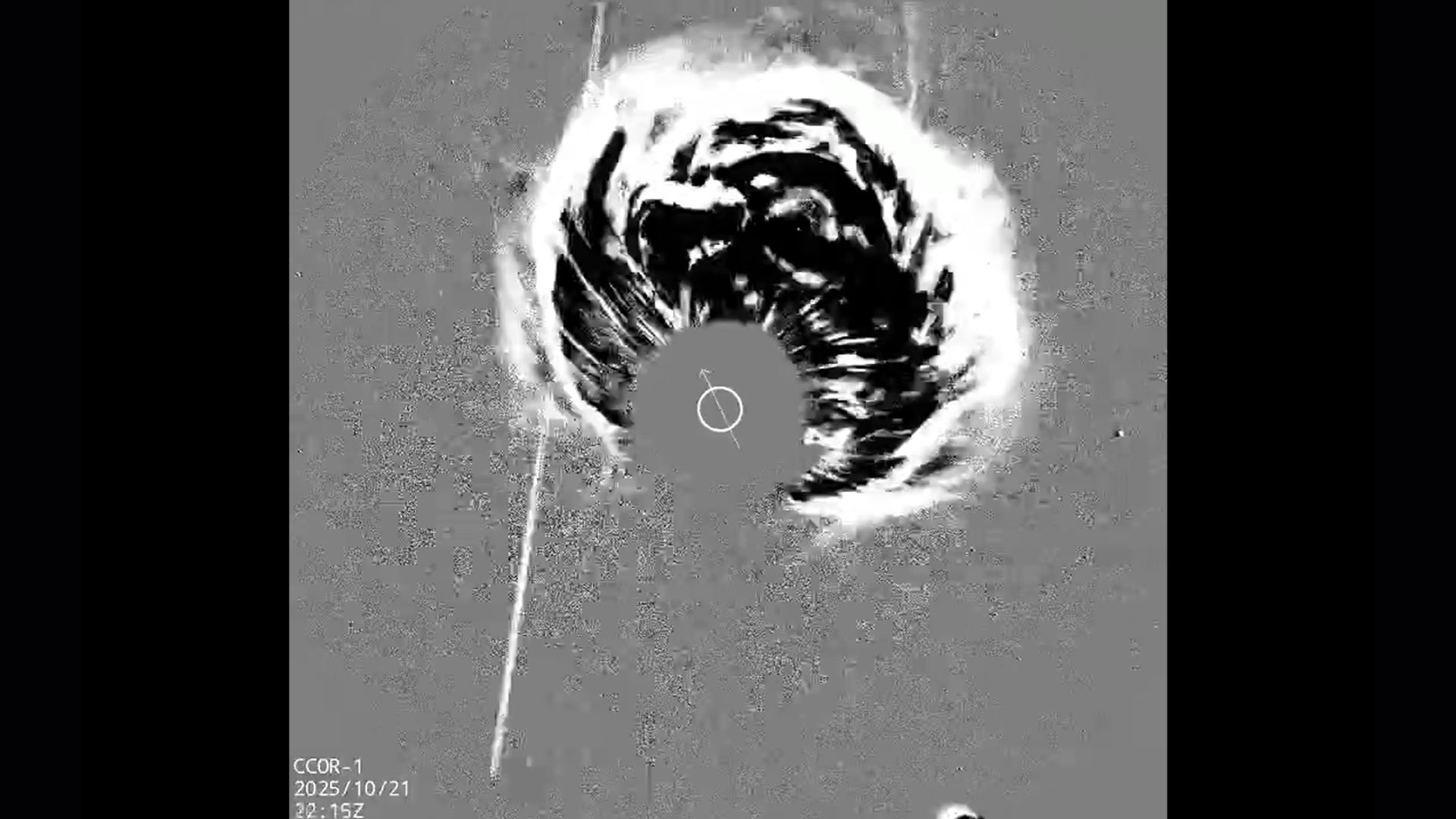Strange Molecule Found in Venus's Atmosphere
A strange gaseousmolecule has been discovered lurking in the atmospheres of both Mars and Venus,scientists announced today, adding that it could affect Venus's hyperactivegreenhouse effect.
Themolecule's signature was first noticed in Venus's atmosphere in April 2006, whenthe European Space Agency's VenusExpress arrived at the planet and began to measure the composition of theatmosphere.
TheInfrared Atmospheric Spectrometer instrument aboard the spacecraft watched thesun set behind the planet and measured the wavelengths of light absorbed by theplanet's atmosphere. Because different gases absorb at different wavelengths,scientists can infer the composition of the atmosphere from the wavelengths thatare strongly absorbed.
While observingVenus, scientists noted an unusual signature in the mid-infrared region ofthe spectrum that they couldn't identify.
"Itwas conspicuous and systematic, increasing with depth in the atmosphere duringthe occultation, so we knew it was real," said study leader Jean-LoupBertaux of the Service d'aeronomie of France's National Center for ScientificResearch (CNRS).
Later thatyear, NASA scientists observing Mars using telescopes in Hawaii notified Bertaux'steam that they had found the same unusual signature.
Because theatmospheres of both Mars and Venus are composed of 95 percent carbon dioxide(as compared to Earth's atmosphere which has only 0.04 percent carbon dioxideand is composed primarily of nitrogen), the researchers thought the strangemolecule could be an isotope of carbon dioxide. (Isotopes have the same numberof protons, but a different number of neutrons than the main form of anelement.)
Breaking space news, the latest updates on rocket launches, skywatching events and more!
This exoticform of carbon dioxide has one "normal" oxygen attached to its carbonatom, while the other attached oxygen atom has 10 neutrons, instead of theusual eight.
Thedifferently-weighted oxygen atoms let the isotope absorb more energy thannormal carbon dioxide molecules, which could mean that it contributes more tothe greenhouse effect on stifling-hot Venus, the researchers said. (Because theisotope only accounts for about 1 percent of carbon dioxide molecules on Earth,its contribution to ourgreenhouse effect is likely very small.)
- Venus and Earth: Worlds Apart
- The Wildest Weather in the Galaxy
- Images: Beneath the Clouds of Venus
Join our Space Forums to keep talking space on the latest missions, night sky and more! And if you have a news tip, correction or comment, let us know at: community@space.com.

Andrea Thompson is an associate editor at Scientific American, where she covers sustainability, energy and the environment. Prior to that, she was a senior writer covering climate science at Climate Central and a reporter and editor at Live Science, where she primarily covered Earth science and the environment. She holds a graduate degree in science health and environmental reporting from New York University, as well as a bachelor of science and and masters of science in atmospheric chemistry from the Georgia Institute of Technology.
